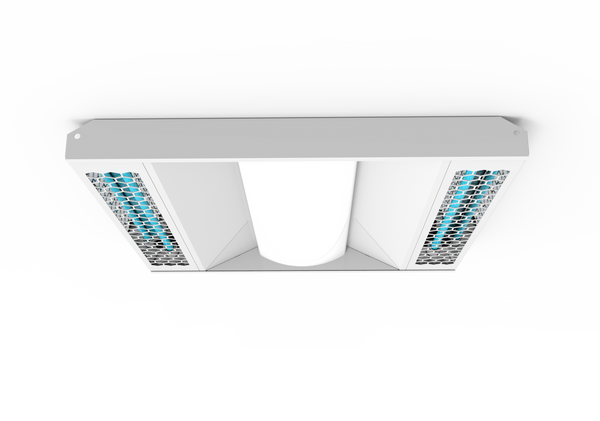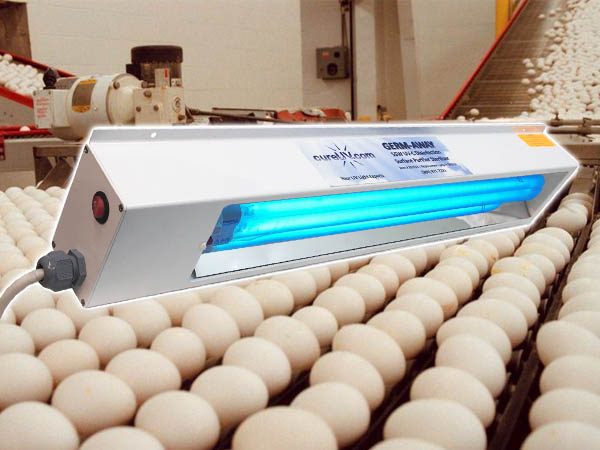Far-UVC UV Sanitizers: Enhancing Hygiene Methods with Precision and Efficiency
Much UVC Light: A Game-Changer in the Battle Against Airborne Pathogens
In the ever-evolving battle against airborne virus, the introduction of far UVC light has actually sparked considerable interest and capacity. What exactly is much UVC light, and how does it function?
The Science Behind Far UVC Light
The scientific principles underlying making use of Far UVC light as a prospective remedy for combating airborne pathogens are both elaborate and appealing. Far UVC light refers to a specific variety of ultraviolet (UV) light wavelengths, generally between 207 and 222 nanometers, which have actually been discovered to properly kill or suspend bacteria such as bacteria and infections. Unlike conventional UVC light, which has a much shorter wavelength and is known for its germicidal residential properties yet can additionally harm human skin and eyes, Far UVC light has been revealed to be safe for human direct exposure.
The essential mechanism behind the performance of Far UVC light depend on its capability to penetrate and destroy the hereditary product of bacteria, including their DNA and RNA. When revealed to Far UVC light, the genetic product goes through a process called photodimerization, where surrounding bases in the DNA or RNA molecule bind together, avoiding replication and providing the bacterium not able to trigger or replicate infection.

Just How Far UVC Light Works
Far UVC light runs by using details ultraviolet wavelengths to effectively reduce the effects of bacteria and stop their replication, making it an appealing option for combating air-borne pathogens. Unlike conventional UVC light, which is hazardous to human skin and eyes, far UVC light has shorter wavelengths, normally in the variety of 207 to 222 nanometers (nm), that do not penetrate the external layer of the skin or the tear layer of the eye. This makes it risk-free for continual human exposure, while still being lethal to viruses and bacteria.
The effectiveness of much UVC light hinge on its capacity to destroy the dna and permeate and RNA of bacteria. When exposed to much UVC light, the hereditary product of these pathogens is harmed, making them not able to replicate and infect cells. Additionally, studies have shown that far UVC light can successfully suspend airborne viruses, such as flu, measles, and coronaviruses, including SARS-CoV-2, the virus liable for COVID-19.
Additionally, far UVC light is likewise capable of sanitizing surfaces and objects in an encased room. By mounting far UVC light fixtures or using mobile far UVC light devices, it is possible to continuously decontaminate the air and surface areas, reducing the risk of airborne transmission of microorganisms.
Advantages of Far UVC Light
Utilizing much UVC light deals an array of substantial benefits in combating air-borne virus and making certain a more secure setting for constant human exposure. Among the crucial advantages of far UVC light is its capacity to effectively counteract numerous kinds of hazardous germs, viruses, and fungis without creating injury to people. Unlike traditional UV light, which can be hazardous to human skin and eyes, far UVC light has a shorter wavelength that allows it to target and ruin pathogens while posturing marginal threat to human wellness.

In addition, much UVC light is much safer for the setting contrasted to conventional disinfection approaches. Chemical anti-bacterials commonly have unsafe components that can get redirected here have unfavorable influences on the atmosphere. Much UVC light, on the various other hand, does not produce any kind of hazardous results or residues, making it a much more environment-friendly and lasting service.
Applications of Far UVC Light
Much UVC light has actually shown to be reliable in getting rid of air-borne pathogens such as viruses, article fungis, and microorganisms. Unlike standard UV light, far UVC light is secure for human direct exposure, making it suitable for constant use in public areas such as health centers, schools, and offices.
Another application of much UVC light remains in the medical care sector. It can be utilized to sanitize health center rooms, running theaters, and clinical devices, decreasing the danger of healthcare-associated infections. Additionally, far UVC light can be incorporated into HVAC systems to purify the air flowing in structures, supplying an included layer of security against airborne pathogens.
Furthermore, far UVC light can be utilized in the food sector to avoid foodborne diseases. It can be utilized to sanitize food processing facilities, eliminating germs and various other bacteria that might infect foodstuff.
Future Ramifications of Far UVC Light
The possible future applications of much UVC light are large and hold promise for different industries and fields. Among the crucial locations where far UVC light can have a significant influence is in medical care setups. Facilities and hospitals might make use of much UVC light to disinfect client areas, running theaters, and waiting locations, reducing the risk of healthcare-associated infections - far-uvc. This can possibly lead to enhanced individual end results and lowered healthcare expenses.
Furthermore, the usage of much UVC light in public areas such as airports, train stations, and shopping center can assist control the spread of airborne pathogens. By constantly sanitizing these locations, the risk of transmission can be dramatically minimized, providing browse around these guys a more secure atmosphere for individuals.
An additional prospective application of much UVC light is in the food market. Much UVC light could be made use of to disinfect food prep work surfaces, packaging products, and storage space locations. This could help stop the contamination of food and reduce the incident of foodborne diseases.
Additionally, far UVC light might be used in HVAC systems to decontaminate the air distributing in structures. This can be specifically valuable in jampacked rooms such as workplaces, theaters, and colleges, where the risk of air-borne transmission is greater.
Conclusion
In conclusion, much UVC light has become a game-changer in the battle against airborne pathogens. Its special homes and capability to securely kill microorganisms and infections make it a promising solution for various applications. From public spaces to healthcare settings, far UVC light offers various benefits in minimizing the transmission of illness. With additional research study and growth, its extensive implementation might have considerable implications for the future of infection control.
Far UVC light refers to a specific array of ultraviolet (UV) light wavelengths, commonly between 207 and 222 nanometers, which have been discovered to successfully kill or suspend bacteria such as infections and germs. far-uvc. Unlike conventional UVC light, which has a much shorter wavelength and is understood for its germicidal properties however can also damage human skin and eyes, Far UVC light has actually been shown to be risk-free for human exposure
Unlike traditional UVC light, which is damaging to human skin and eyes, much UVC light has much shorter wavelengths, typically in the range of 207 to 222 nanometers (nm), that do not pass through the outer layer of the skin or the tear layer of the eye. Unlike traditional UV light, which can be unsafe to human skin and eyes, much UVC light has a shorter wavelength that enables it to target and destroy virus while positioning marginal risk to human health and wellness.
Unlike standard UV light, far UVC light is secure for human exposure, making it appropriate for continual use in public areas such as workplaces, health centers, and colleges.